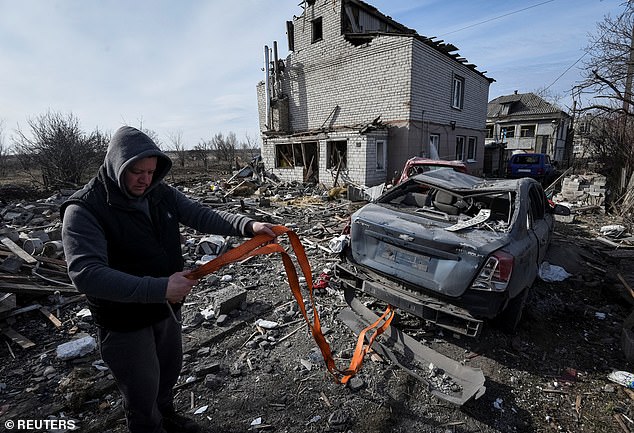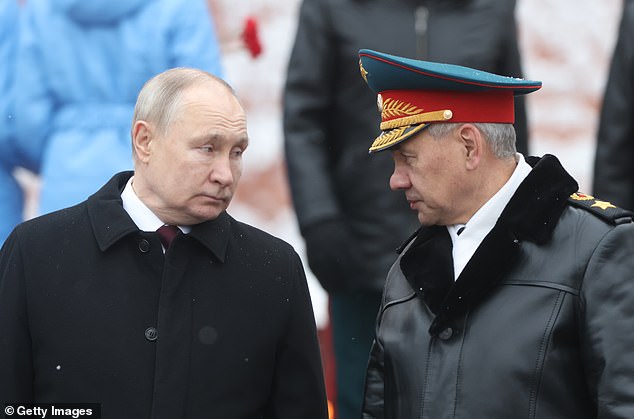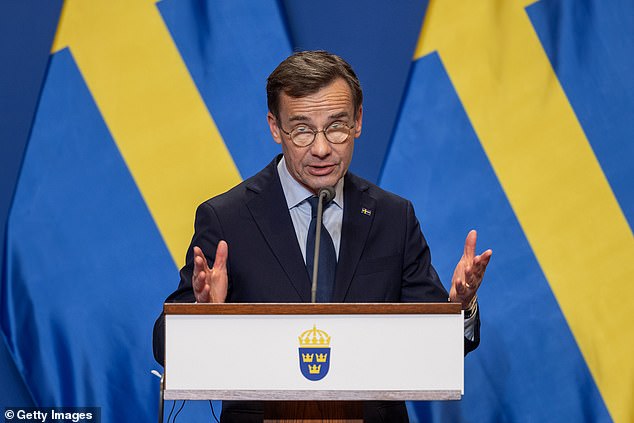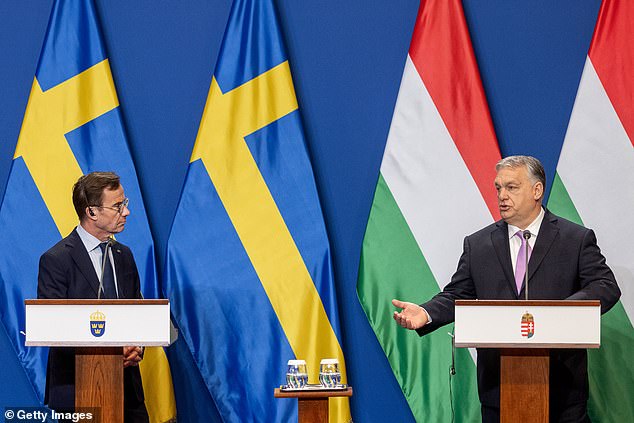Swedish PM Ulf Kristersson hails ‘historic day’ as Hungary finally approves Nordic nation’s bid to join NATO
Swedish Prime Minister Ulf Kristersson said today it was a “historic day” after Hungary became the latest NATO member to approve the country’s application to join the alliance from 2022 in response to Russia’s invasion of Ukraine.
‘The parliaments of all NATO member states have now voted in favor of Swedish accession to NATO. Sweden stands ready to assume its responsibility for Euro-Atlantic security,” Kristersson said in a statement on X.
Sweden’s NATO membership was supported by 188 lawmakers in the Hungarian parliament, with 6 against and no abstentions.
Hungarian Prime Minister Viktor Orbán’s government has faced pressure from NATO allies to stick to the rules and seal Sweden’s entry into the alliance.
NATO Secretary General Jens Stoltenberg immediately welcomed Hungary’s ratification. “Sweden’s membership will make us all stronger and safer,” he said on X.
Swedish Prime Minister Ulf Kristersson and Hungarian Prime Minister Viktor Orban shake hands after a press conference following their meeting in Budapest, Hungary, on Friday

A resident prepares a damaged car for towing, near a residential building damaged in a Russian drone attack, in Dnipro, Ukraine, on Monday
After Finland joined last year, Sweden’s membership – which cleared the final hurdle today with Hungary’s vote on ratification – means that all Baltic Sea countries, with the exception of Russia, will be part of the military alliance.
That has led some to call the sea a “NATO lake,” with Western allies now appearing well placed to strangle Russia’s room for maneuver on the crucial shipping route if war with Moscow ever breaks out.
But analysts warn that while Sweden’s accession makes it easier for NATO to exert control and strengthen the vulnerable Baltic states, Russia could still threaten the region from the heavily armed Kaliningrad exclave and undersea infrastructure.
“If you look at a map, geographically the Baltic Sea is becoming a NATO lake, yes,” said Minna Alander, a researcher at the Finnish Institute for International Affairs.
“But there is still work to be done for NATO.”
Since Russia’s invasion of Ukraine, a series of high-profile incidents involving pipelines and cables under the Baltic Sea have woken NATO up to its vulnerabilities.
In September 2022, a sabotage attack hit the Nord Stream gas pipelines between Russia and Europe. More than a year later, investigators have still not publicly named those responsible.
Then last October, a gas pipeline and a cable from Finland and Sweden to Estonia were damaged. Finnish police believe a Chinese freighter was probably involved.

Russian President Vladimir Putin listens to Defense Minister Sergei Shoigu taking part in the wreath-laying ceremony at the Tomb of the Unknown Soldier on the occasion of Defender of the Fatherland Day on Friday

Swedish Prime Minister Ulf Kristersson speaks with his Hungarian counterpart Prime Minister Viktor Orban during a press conference after their meeting in Budapest, Hungary, on Friday
In response, NATO has increased its naval deployment and wants to expand its monitoring capabilities, but keeping an eye on what’s happening underwater is an important task.
“It is very difficult to have overall control over a sea as you would have control over areas on land,” said Julian Pawlak, a researcher at Germany’s Bundeswehr University in Hamburg.
‘What the Nord Stream sabotages have shown, among other things, is that it remains difficult to know exactly what is happening beneath the surface and on the seabed.’
Sweden has long had a close partnership with NATO, but its formal membership allows the country to be fully integrated into the alliance’s defense plans.
Beyond its long Baltic coastline, Sweden brings with it the island of Gotland, which would play a central role in helping NATO impose its will.
But across the water, Russia has its own vital outpost: the Kaliningrad exclave.
Sandwiched between Poland and Lithuania, Moscow has in recent years turned the region into one of Europe’s most militarized areas, with nuclear-capable missiles stationed there.
Russia’s Baltic Fleet, based in Kaliningrad, is a shadow of what it was during the Cold War, and the invasion of Ukraine has removed some of its forces from the region.
But John Deni, a research professor at the US Army War College, said the Kremlin has maintained investments in submarine capabilities and still has the firepower to stage small-scale landings or threaten NATO supply routes.
“In terms of artillery, indirect fires and nuclear weapons, they are better than NATO allies in the region,” Deni said.
“Allies must confront and counter that threat.”

Swedish Prime Minister Ulf Kristersson and Hungarian Prime Minister Viktor Orban hold a press conference on Friday after their meeting in Budapest, Hungary
On the other hand, although Stockholm brings with it a rich legacy of maritime history, its naval power in the Baltic Sea, like other NATO states in the area, remains underpowered.
“Even if you include Sweden, NATO’s naval assets are relatively limited,” Deni said, adding that allies need to develop their ability to conduct demining under fire.
Three countries breathing a particular sigh of relief over the accession of Sweden – and Finland – are NATO’s Baltic states, Estonia, Latvia and Lithuania, long seen as the alliance’s Achilles heel.
War planners are struggling to figure out how to avoid being cut off as Russian land forces seize the 40-mile Suwalki Gap between Belarus and Kaliningrad.
The Swedish position, which straddles both the North Sea and the Baltic Sea, opens an important route for the transit of more NATO troops to protect them in the event of an attack.
“It allows US forces to reinforce the Baltic Sealands in a timely manner, but especially the frontline states,” said Tuuli Duneton, Estonian Deputy Defense Minister.
Despite NATO’s joy at welcoming Sweden into the fold, American academic Deni insisted the alliance had to end because the Baltic Sea was its own property.
“Calling it a ‘NATO lake’ leads to complacency,” Deni said.
“The challenge and threat that Russia poses in the region are in some respects significant and allies currently lack the capacity to meet that in a crisis.”
